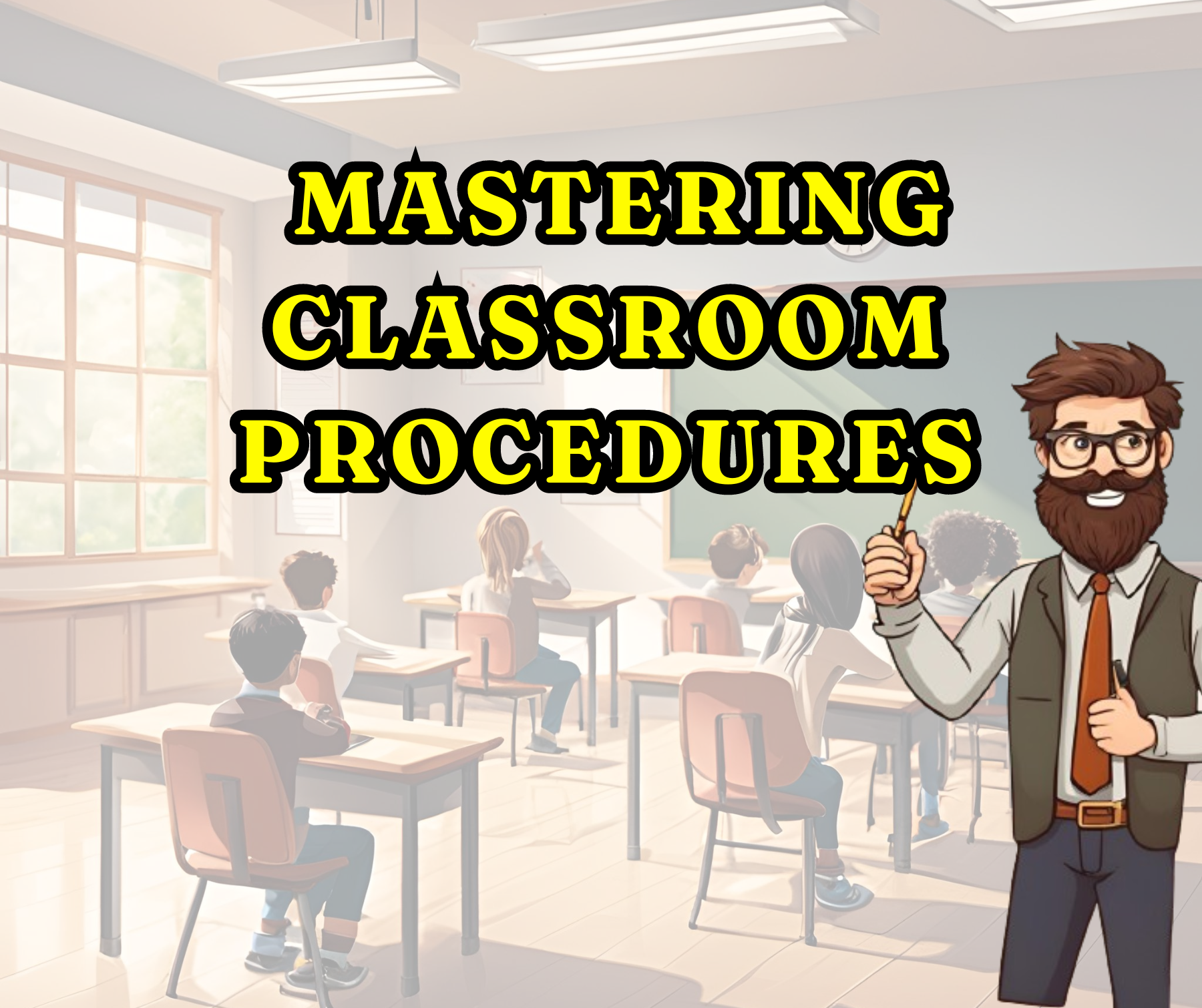Have you ever found yourself buried under a mountain of paperwork, with a classroom full of students who don’t know what to do? We’ve all been there. Managing a classroom can feel like juggling flaming swords while riding a unicycle. But guess what? It doesn’t have to be that way! One of the secrets to transforming your classroom into a well-oiled machine is mastering classroom procedures. In this blog post, we’ll dive into what classroom procedures are, why they’re essential, and how you can implement them effectively to create a smooth and productive learning environment.
What Are Classroom Procedures and Why Do They Matter?
Classroom procedures are the specific guidelines and routines that students follow to keep everything running smoothly. Unlike rules, which set the boundaries for acceptable behavior, procedures are all about the “how-to” of daily classroom life. They outline the steps for everyday tasks, from lining up to turn in homework, and they help students understand what’s expected of them.
Procedures Save Time and Resources
One of the biggest benefits of having clear classroom procedures is that they save time and resources. When students know what to do and how to do it, you spend less time managing disruptions and more time teaching. Imagine not having to repeat instructions a hundred times a day—sounds like a dream, right? With well-established procedures, you can make that dream a reality.
Reducing Confusion and Stress
Procedures help students feel more secure and less anxious because they know what’s coming next. There’s no guessing game involved. This clarity reduces confusion and stress for both you and your students, creating a more harmonious classroom environment.
Implementing Effective Classroom Procedures
Ready to get started with implementing classroom procedures? Here are some tried-and-true strategies to help you out.
1. Use of Hand or Sound Signals
Using hand or sound signals is a fantastic way to limit classroom disruptions and communicate effectively without saying a word. These signals can be used for various purposes:
- Getting Attention: Raise your hand, and students know to stop what they’re doing and focus on you.
- Movement: Use a specific sound, like a bell or a chime, to signal when it’s time to sit down, line up, or switch activities.
Consider printing a chart with your most-used signals and displaying it in your classroom. Using American Sign Language symbols is a tremendous way to communicate. It is also exposing the class to different means of communication. This visual aid helps students remember what individual signals mean, ensuring smoother communication and fewer interruptions.

2. Managing Transitions
Transitions between activities can be chaotic if not managed properly. To keep things orderly, use clear signals for starting and stopping activities. Bells, chimes, or timers work wonders for this. Assigning students as bell ringers or time monitors can also be a great way to give them some responsibility and keep them engaged.
For example, when it’s time to switch from group work to individual tasks, a bell can signal the transition. Students know that when they hear the bell, it’s time to wrap up their discussions and get ready for the next activity.
3. Procedures for Using Supplies
Having a clear system for using classroom supplies can prevent a lot of headaches. Design procedures that teach students how to use and share supplies responsibly:
- Sharing Supplies: Create a sharing system where students know how and when to share items like markers, scissors, and glue.
- Returning Items: Establish a clear process for returning supplies to their designated spots. This might include signing out materials, capping markers, and putting everything back where it belongs.
These procedures not only keep the classroom organized but also teach students valuable lessons in responsibility and respect for shared resources.
4. Turning in Work
A streamlined procedure for turning in work can save you tons of time and prevent the dreaded “lost homework” scenario. Designate a specific place where students should turn in their completed assignments. Whether it’s a basket, a tray, or a specific folder, make sure it’s clearly labeled and easy to access.
You can also create a procedure for unfinished work. Assign individual folders for incomplete assignments so students know where to find their work and continue from where they left off. This way, there’s no confusion about where assignments are or what needs to be done next.
The Wrap-Up
Mastering classroom procedures is a game-changer for creating a smooth and productive learning environment. By implementing clear and consistent routines, you’ll save time, reduce stress, and create a classroom where students know exactly what’s expected of them. Plus, you’ll have more time to focus on what you love most—teaching and inspiring your students! For more information on classroom management, and five tools that can transform your classroom, check out this blog post!
If you found these tips helpful, why not stay connected? Follow me on Twitter for more teaching tips and insights. Also, check out my YouTube channel for teaching tips and other great content. Let’s make this school year the best one yet!
